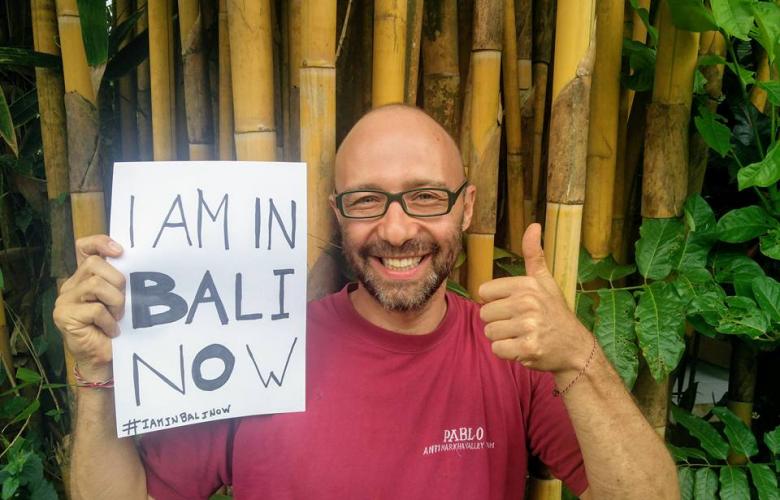Things began to change on the paradise island from September 22, when authorities raised the status of the still active volcano, Mount Agung, the highest and most sacred volcano in Bali, to level 4 - the highest alert level. It is worth remembering that it has been more than 50 years since the last eruption in 1963, which killed more than 1,000 people.
This prompted the local government to evacuate those who lived within 7 -12 kilometers of the volcano to safer areas. It should be noted that the majority of Bali's hotels and resorts and, therefore visitors, are well away from any danger zones. Ubud is 30 kilometers away; Canggu is about 60; Kuta is close to 70 and the Bukit peninsula is even further.
Many governments, however, issued travel warnings and foreign media outlets suggested Bali was not safe to travel to. For some this raised issues over travel insurance as once a travel warning has been declared, insurers have a valid reason not to cover.
The impact this had on the local economy was immediate and significant. According to General Manager of Khiri Travel Indonesia, Herman Hoven, there was a 20% drop in tourism bookings to Bali as a result.
It was against this backdrop that the #IAmInBaliNOW campaign was launched.
This is a collaboration between travel agents, hotels, resorts, shops, restaurants, yoga centers and suppliers supported by tourism experts, both national and international under the banner of #BookGreener - a community of change makers in Bali whose mission is to protect the very reasons people began coming to Bali in the first place.
They aim to do this by being a genuine, honest and truthful voice, spearheading initiatives that benefit Bali and its people, particularly in brainstorming solutions to waste, water, soil and education.
This has resulted in practical results such as transforming plastic waste with the "Precious Plastic Community" and reducing the usage of plastic bottles with a "RefillBali" campaign, which has gained enough support for there to be "Refilling Stations" in many parts of the island.
They have support and guidance from the teams who implemented similar initiatives in Nepal and Ecuador in the wake of their country's devastating earthquakes.
There are three key aspects for the #BookGreener team in the #IAmInBaliNOW initiative:
1. Telling the truth about what is really going on in Bali as a counter-balance to what is presented by a bias mainstream media.
2. Raising money to help refugees displaced by the eruption.
3. Inspiring travellers to come to Bali for all the right reasons (for its natural beauty, unique culture and strong sense of community and spirituality)
This they do by encouraging people to take selfies of actual activities and traveler experiences with the hashtag #IAmInBaliNOW and sharing to their social media platforms. There are more than 5,000 pictures so far and over 600 people have changed their Facebook profile pictures in support.
If you have already made plans to visit Bali and are wondering what to do, Theodora from Escape Artistes offers some important considerations:
1. Where Are You in Relation to the Volcano Danger Zones?
Remember the majority of hotels and resorts are well away from any danger zones.
2. How Key Is It That You Get Back to Work on Time?
There is a chance the airport will be closed because of ash clouds and wind directions and you may face delays getting home.
3. Do You Have Serious Respiratory Problems?
Volcanic ash is a health risk. Again depending on the amount of ash and wind directions this needs to be taken seriously.
4. Are You Travelling on a Shoestring?
Insurers may not cover flight changes and hotels associated with this disruption if you booked your holiday after foreign governments issued their initial travel warnings.
If you still decide to go to Bali, despite the volcano, travel warnings and media reports, rest assured you will be welcomed with the warmth and hospitality the Balinese are famous for and however much you end up spending you will be helping to support local families in a time of need.
Latest Updates:
On November 21, Agung released a small, phreatic eruption (caused by water) and a cloud of super-heated steam.
On the evening of November 25, a second, larger magmatic eruption ejected a significant ash cloud and some airlines cancelled flights as a precaution. The following morning on November 26, the ash cloud was reported to have reached a height of 6,000 metres.
On November 27, the International Airport at Ngurah Rai closed and a level 4 alert status was reinstated, which meant evacuation for those living within 7 - 12 kilometers of the volcano.
November 29, Indonesian officials say ash continues to pose a danger to planes and Bali's Ngurah Rai International Airport will remain closed until at least Thursday (November 30) morning.
November 29, Chairman of the Association of Hotels and Restaurants Indonesia (PHRI), Hariyadi Sukamdani, stated that hospitality services in Bali, particularly hotels, have agreed to provide special rock-bottom prices for tourists stranded in Bali because of the closure of the airport.
November 29, Head of the indonesian Agency for Meteorology, Climatology and Geophysics (BMKG), Dwikorita Karnawati, predicts that Tropical Cyclone Cempaka, which is currently positioned just off the south west coast of East Java, will bring with it extreme heavy rains which will help clean the air from volcanic ash as well as pull the ash cloud towards East Java.
Sources: #iAmInBaliNOW, #BookGreener, Bali Tourism Board, Escape Artistes, Inquirer, Warta Kota, Okezone, Detik News
Similar to this:
Bali set to become plastic bag free
Bali's promotion on the international stage set to boost the economy







